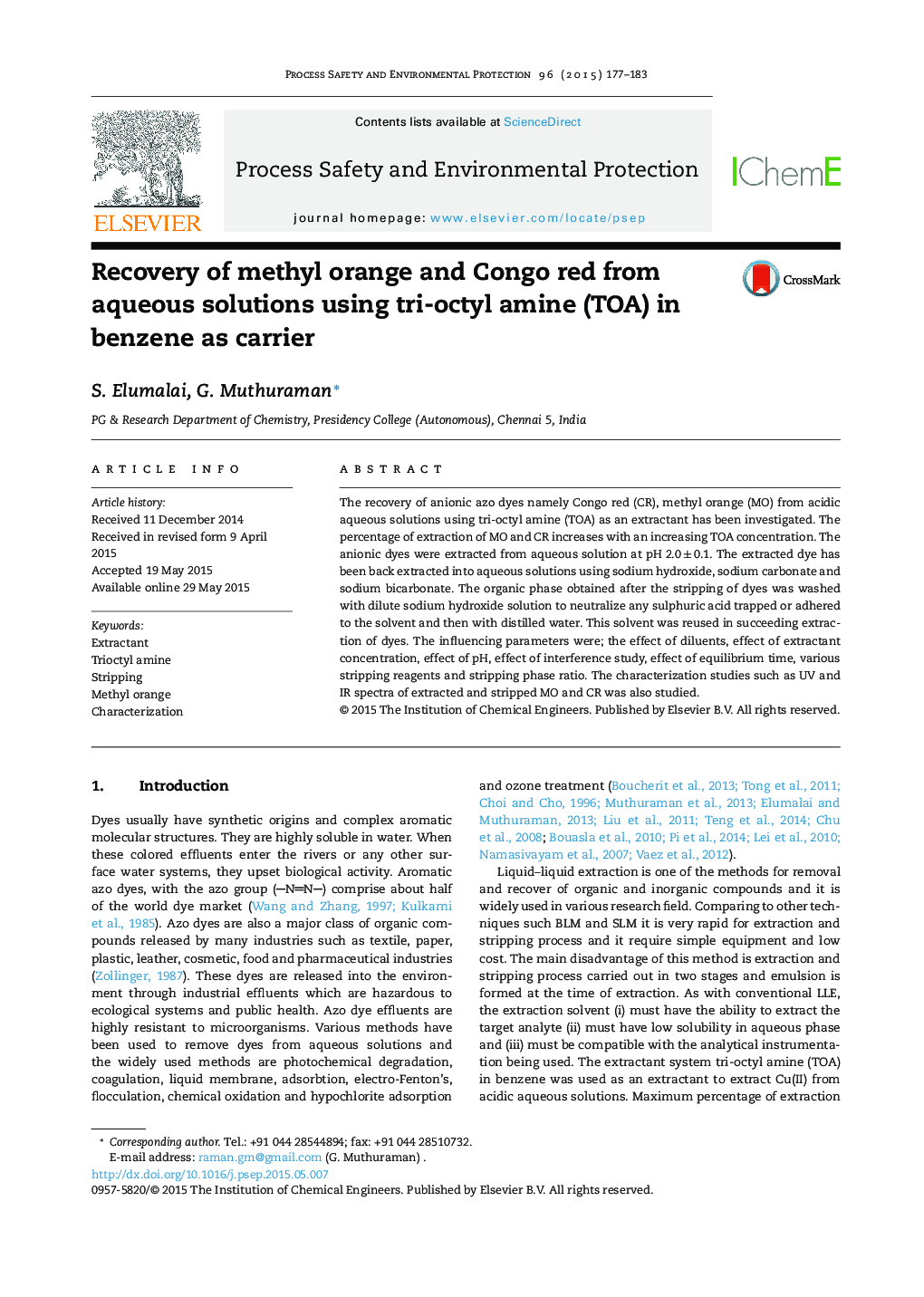| Article ID | Journal | Published Year | Pages | File Type |
|---|---|---|---|---|
| 588357 | Process Safety and Environmental Protection | 2015 | 7 Pages |
•Removal of methyl orange and Congo red using tri-octyl-amine acts as an extractant.•Recovery of dye from organic phase was done using 5 × 10−3 mol/dm3 of sodium hydroxide, sodium carbonate and sodium bicarbonate.•Recovered dye can be reused.
The recovery of anionic azo dyes namely Congo red (CR), methyl orange (MO) from acidic aqueous solutions using tri-octyl amine (TOA) as an extractant has been investigated. The percentage of extraction of MO and CR increases with an increasing TOA concentration. The anionic dyes were extracted from aqueous solution at pH 2.0 ± 0.1. The extracted dye has been back extracted into aqueous solutions using sodium hydroxide, sodium carbonate and sodium bicarbonate. The organic phase obtained after the stripping of dyes was washed with dilute sodium hydroxide solution to neutralize any sulphuric acid trapped or adhered to the solvent and then with distilled water. This solvent was reused in succeeding extraction of dyes. The influencing parameters were; the effect of diluents, effect of extractant concentration, effect of pH, effect of interference study, effect of equilibrium time, various stripping reagents and stripping phase ratio. The characterization studies such as UV and IR spectra of extracted and stripped MO and CR was also studied.
Graphical abstractFigure optionsDownload full-size imageDownload high-quality image (40 K)Download as PowerPoint slide
